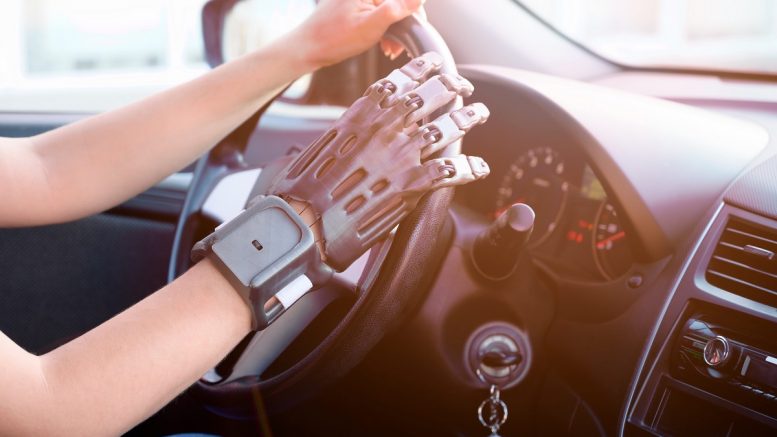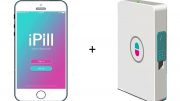Technological advancement has undoubtedly become a priority for most industries. However, for healthcare, that case is even more so. And right at the heart of that transformation is 3D printing. Personalisation is often referred to as the future of healthcare and 3D printing plays a key role in that by enabling production of customised devices that fit each patient.
To broaden that application – or to make the personalisation in healthcare more widespread – the sector requires software that makes designing 3D printed devices simple, even for people who don’t have technical knowledge of 3D printing, like clinicians who are not trained in this area.
Additive manufacturing may still be in a critical phase of development but its life-changing impact on the sector is being felt on a wide scale, from guiding future innovation right through to its promise of aiding the completion of complicated surgeries today.
As a result, forecasts believe that medical device additive manufacturing could grow to as much as $9.8 billion by 2031. Meanwhile, new estimations also show that 90% of the top 50 medical device companies worldwide currently use 3D printing to create accurate prototypes and medical devices.
With its influence continuing to grow, I analyse the many ways software for additive manufacturing is making a tangible difference in people’s lives.
Precise, painless, and personalised experiences are becoming the norm
Romans Ferrari Medical Centre is a paediatric rehabilitation institution based in Lyon, France. It is renowned for working with children suffering from burn injuries and recently turned to 3D printing in order to deliver a pain-free approach to fabricating facial orthoses.
Historically, the process of creating custom-made face masks has been anything but painless. It requires taking an impression of the patient’s face with plaster strips, which is incredibly discomforting because of the direct contact with the flesh. Up to now, it’s been a necessity for the purpose of fabricating materials that massage the impacted area of the skin and stimulate healing.
It is the traumatic nature of conventional manufacturing methods that has led many caregivers around the world to explore better alternatives.
Romans Ferrari Medical Centre is one of those caregivers. In 2021, it piloted a new painless treatment for children suffering from burns which involves 3D printing. The treatment was developed by 3DZ, a specialist reseller of additive manufacturing software and hardware.
How was it done?
In order to get a highly-accurate image of a child’s face, 3DZ substituted the traditional plaster strips with a 3D scanner, with data captured by the scanner serving as a negative image when creating a perfectly-fitting mask. The digital model of the face was 3D printed on a Formlabs Fuse1 and a polypropylene sheet is thermoformed on top of the model to create the orthosis.
For the modelling, 3DZ works with Geomagic Freeform, Oqton’s 3D design and sculpting software, which creates products that precisely fit the human body. The software was used in conjunction with a haptic device that allowed the team to quickly and easily mark the treatment area on the 3D digital model.
Romans Ferrari’s pilot project was completed in early 2022 and proved to be a major success, with the approach not only being economically feasible but also providing a stress-free experience for young patients. The institution has since permanently replaced the old plaster cast and milling method with 3D scanning and printing.
3D prostheses are making anything possible
On the other side of the Atlantic, there is a surge of people rapidly embracing additively manufactured prosthetics as they prove to be comfortable in both routine activities and high-impact conditions like sports.
Richard Blalock is just one fine example of this. An engineer with a lifelong passion for running, Richard traverses up to 2,000 miles (3,219 km) a year. An impressive feat. Even more, considering his right foot was amputated in 2009.
Initially, he turned to traditionally-fabricated prostheses. However, Richard was left in pain and blisters every time he took up running. In his search to find a pain-free alternative, he opted to trial custom-made 3D-printed prostheses, created by Brent Wright. He hasn’t looked back since.
He said: “The weight-savings are a big plus for me and comfort is right up there with that. We can also adapt the design to accommodate leg changes. Residual limbs will change over time, and, with 3D printing, you can change the model of the limb on the computer and print the new leg. That makes a night and day difference. It can be done in hours instead of days or weeks.”
His original prosthesis was made from carbon fibre and was substantially heavier. “Carbon fibre is quite light, but between the inner socket and the outer socket frame, my 3D-printed leg is about a pound lighter. When I’m running 26 miles [42 km] this makes a huge difference.
“The frame I have currently that Brent 3D-printed is very sturdy – we could run over it with a truck and it’s not going to break. But I feel confident we could lower the weight even more.”
3D printing is revolutionising patient care
Patient care is always more effective if treatment can be tailored to a particular patient, especially if the treatment requires a device or instrument that fits the patient, like a prosthetic socket or a plate to hold bones together whilst healing.
Patient specific devices will always fit better, be more comfortable, and typically function better than a generic device manufactured using standard sizing models.
Historically, producing patient-specific devices has been difficult as traditional manufacturing techniques are relatively slow and expensive, requiring highly skilled technicians. These limitations often meant a patient-specific device was either too expensive or, in the case of an emergency, could not be manufactured in time.
There has been a quiet revolution happening for the past 15 and more years in the treatment using patient specific devices. Digital technology and healthcare 3D printing have improved vastly to make them an everyday reality, one available to many more patients than was ever possible before.
Scanners are now available to create a digital twin of the patient at a lower cost, more accurately, more reliably, and easier, than ever before.
Even when the digital twin existed inside the computer, planning and design software used to be only really effective with mechanical shapes and forms (think of a car engine), not the organic forms of the human body.
But now, effective design software for additive manufacturing makes it easier to manufacture the more complex forms of the body. Lastly, manufacturing patient-specific devices using 3D printers is now easier and more available than ever before as printers become mainstream with lower costs and better materials.
It is this confluence of design software and 3D printing technology, that is now making patient-specific devices an everyday reality across healthcare. All resulting in patients living a better life.
By Kevin Atkins, Healthcare Product Manager at Oqton





